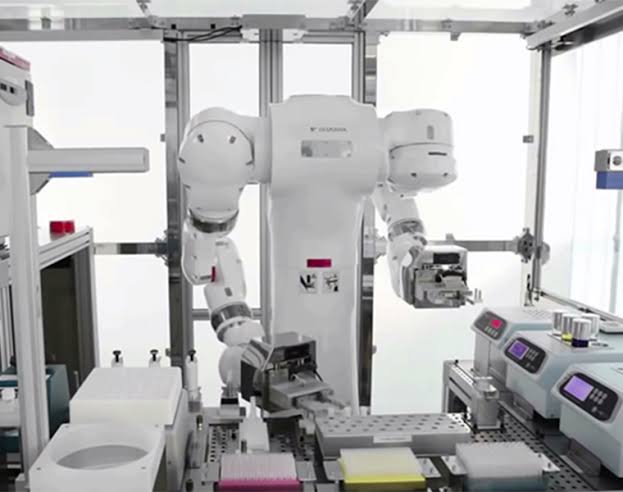In recent years, hospitals have increasingly integrated robotic technology into their pharmaceutical operations, this involves using robotic systems to automate repetitive tasks across the manufacturing process, including drug formulation, sample preparation, packaging, quality control and drug delivery. In this article, we are focused particularly in the preparation and delivery of chemotherapy medications. This advancement aims to enhance precision, safety, and efficiency in cancer treatment.
Robotic Preparation of Chemotherapy Drugs
At MedStar Georgetown University Hospital, robots assist pharmacists by accurately mixing chemotherapy medications. These robots operate within a secure system, significantly reducing staff exposure to hazardous substances and improving the precision of chemotherapy preparation. Equipped with a drug library and precise scales, they ensure that each dose meets exact specifications, minimizing the risk of errors. The automated system prepares personalized doses and maintains electronic records for all compounded chemotherapies, streamlining the process from prescription to patient delivery.
Similarly, the Mayo Clinic has implemented a chemotherapy compounding robot capable of preparing doses in approximately 4 to 7 minutes, comparable to manual preparation times. This technology allows pharmacy staff to engage more directly with patients, enhancing the overall care experience.
Robotic Delivery Systems
Beyond preparation, robots are also transforming the delivery of medications within hospital settings. For instance, MedStar Georgetown employs a delivery robot named “Luke,” which transports chemotherapy medications directly to the hospital’s infusion suite. This system not only expedites the delivery process but also reduces the workload on healthcare staff, allowing them to focus more on patient care.
St. Elizabeth – Fort Thomas Hospital in Kentucky has utilized similar robotic systems for medication deliveries over the past eight years. These robots are programmed to navigate multiple hospital units, delivering medications efficiently and securely. This automation has significantly reduced the time staff spend on manual deliveries, enhancing operational efficiency.
Enhancing Safety and Efficiency
The integration of robots in chemotherapy preparation and delivery addresses several critical concerns:
-
Safety: Robots minimize healthcare workers’ exposure to toxic chemotherapy agents, reducing the risk of occupational hazards.
-
Accuracy: Robotic systems ensure precise compounding of medications, adhering to exact dosages and formulations, which is crucial for effective patient treatment.
-
Efficiency: Automation streamlines the medication preparation and delivery process, reducing wait times for patients and allowing pharmacists and nurses to allocate more time to direct patient care.
As technology continues to advance, the role of robotics in healthcare is poised to expand, offering promising improvements in patient outcomes and operational workflows.
For a visual insight into how robots are utilized in hospitals for mixing and delivering chemotherapy drugs, you can watch the following video:













































